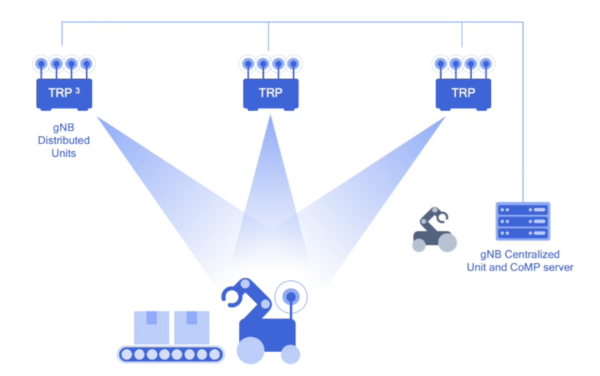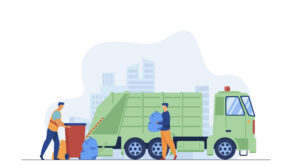4 Cutting-Edge IoT Trends for 2022
We’ve previously discussed the most exciting products at CES 2021. These included novel semiconductors and battery technologies, COVID-19 infection detection systems, and highly advanced TV sets. However, at CES 2021, it seemed like everything revolved around health concerns and better methods for time management at home.
On the other hand, CES 2022 had a markedly different vibe. There we saw products addressing ideas of inclusion, mobility, and accessibility. Of course, we also saw many projects returning to the trajectory they had sketched before the pandemic hit. This return to form is true of real-world projects, not just CES’s displays. So let’s look at the future of Internet of Things (IoT) projects and IoT development.
Here’s How IoT Will Protect Ecology
In the arena of nature protection, we’re starting to see much more restrictive regulations, alongside a much more intense media focus on sustainability. So it’s easy to see why businesses are considering environmental monitoring projects more seriously now than ever.
These options have become more available to any business because of the development of IoT and 5G. Today these two technologies drive phenomenal investments into systems for enhancing sustainability.
Case Study: The French company Kerlink specializes in wireless networking. On the other hand, NETOP Technology offers development services specifically for IoT. These two groups of experts joined forces in 2021 to build a system for wildfire prevention. NETOP delivered a sensor-based platform to detect forest fire outbreaks before they become catastrophic. These sensors then transfer the data they collect to a platform using the LoRaWAN gateways Kerlink has developed. This software platform uses artificial intelligence algorithms to do threat calculations online. If the risks exceed a predetermined threshold, this platform-sensor solution will send an alarm to a specified user.
Here’s How Private 5G Networks Will Affect Industrial IoT
Factories and traditional industries of today are facing an unprecedented array of challenges. For example, security on the factory floor is a massive concern, while time-consuming manual processes and a surprising lack of tools to facilitate preventive maintenance plague many of these industries. The great news is that today’s advanced IoT technologies and systems offer solutions to these problems.
However, the news is not all rosy. Some long-standing problems in this industry serve as barriers to the wider implementation of prevailing trends in industrial IoT. For example, sensors may collect massive quantities of data, but they lack a low-latency network to support the transfer of this data after collecting it. And that’s saying nothing about the more difficult locations, such as rural or remote locations where we may find factories, nor the specific challenges of oil rigs and mines, which may have no pre-existing internet options.
For all these reasons, 2021 saw enterprises begin moving to private 5G networks in droves. The years 2022 and 2023 will undoubtedly expand this trend.
Case Study: In Columbia, minors within the Andes mountain range often operate in highly hazardous conditions. But because this area has higher compensation rates than the average for the surrounding region, mining retains its popularity. The surprising lack of corporate control and the frequency of illicit digging within unapproved mines also results in high casualty rates. Between 2005 and 2018 alone, Colombian mines registered more than 1,200 emergencies.
Therefore, Nokia and the AngloGold Ashanti Colombia mining company launched a joint e-project to build a private 5G network. This ultra-low latency network facilitates the transfer of HD imagery from this remote site. Furthermore, this private 5G Network also guarantees the success of real-time monitoring by offering reliable ultra-wideband connectivity.
Here’s How Telemedicine Will Enhance In-Person Consultations
Global consultancy McKinsey has estimated that telemedicine will become a $250 billion industry in the post-COVID-19 world. While some tools will likely vanish along with the pandemic, other tools developed during the pandemic will remain. For example, video consultations are likely to stay with us, as are remote patient monitoring and the rapid digital transmission of medical imaging. We’ve become too accustomed to the accessibility and convenience of virtual or digital medical services to let them go quickly.
However, conventional, in-person communication with your doctor will likely make a comeback too. At the same time, this interaction has fundamentally changed during the pandemic. The new realities of COVID-19 gave an unprecedented push that accelerated the integration of IoT and smart technologies within the healthcare industry. 2022 and 2023 are likely to demonstrate a continued mixed or hybrid approach to service delivery in healthcare. Doctors will continue combining personal consultations with virtual or digital telemedicine checks. We expect many healthcare institutions to continue focusing on a virtual-first approach to delivering health services.
Case Study: the UC Davis pediatric telemedicine program was one of the earliest such programs to launch in the United States. However, UC Davis has now launched a new nationwide program in hybrid mode for asthma patients. Why hybrid, though? The hybrid program combines several different factors, such as enabling the use of connected devices by patients for the measurement of pulmonary function at home. The patients then also undertake periodic consultations with specialists online. Patients also regularly get offline checkups with doctors as well.
Asthma is a widespread condition in the US, particularly among young people. This emerging combination of in-person care with Telemedicine and IoT promises to transform the routine treatment of asthma. Regarding accessibility, all patients have the same access to professional medical attention. Even more than this, this program guarantees access to periodic physical exams and measurements in a way that wasn’t accessible before.
Here’s How Monitoring Will Become a Must-Have Attribute of Any Project
The COVID-19 pandemic forced businesses to track, calculate, and minimize their expenses more effectively. Monitoring solutions can help track and evaluate operations and detect any imbalances or anomalies in this context.
Monitoring has become far more accessible because monitoring devices today are both tiny and inexpensive, with long run times and minimal electricity consumption. These modern monitoring devices are also widely affordable, meaning that Fortune 500 companies and small private businesses can similarly use today’s low-power electronics. The diversity of IoT development options available guarantees that each user can obtain a monitoring solution that matches their specific issues and use cases.
Case Study: David Power and Noel Griffin are farmers from a small town in Ireland called Cappoquin. They purchased sexed semen to administer to their cows for higher conception rates. However, these farmers needed a monitoring solution to make the best use of this difficult-to-manage resource.
David and Noel selected an IoT monitoring solution that uses artificial intelligence (AI) algorithms in bovine heat detection. This technology and technique ensure that farmers know the best time for insemination. David and Noel said they obtained a conception rate of 66%, which is well above average. By removing the guesswork, they got a high return on investment from the start of their internet of things deployment.
Case Closed
CES is a thrilling opportunity to meet like-minded folks who see the importance of keeping people at the center of IoT development projects. There’s no doubt that we are currently witnessing the transition into an entirely new generation of digital and IoT development innovation.
We now have all of the necessary technologies, so it’s time to bring a new generation of cutting-edge internet of things projects to life. So contact Softeq’s IoT development services specialists today for a consultation to see what the future of IoT holds for you.




















